The analisys shows an effect on the reconstructed mass of the K and a distortion on the reconstructed u that fortunately cancels out on the averaged sample.
The final slope δg is not spoiled by this effect.
Mass distrubution
Here the mass distributions for a rotation of 2 mrad and 6 mrad are reported as well as the plots of the masses versus the angle φ of the odd pion. Note that the resolution on the reconstructed Kaon mass is worse than in the case of "imperturbated" sample because the rotation induces a dependency of the mass on the odd pion azimuthal angle.
Please
clik on the figure to enlarge.
--Mouse middle button--
--Mouse middle button--

mk for at 2 mrad
|
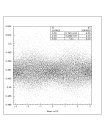
mk vs φ at 2 mrad;
|
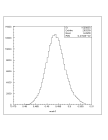
mk at 6 mrad
|
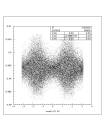
mk vs φ at 6 mrad
|
u distributions history for all the categories.
| Field up | Field down | <=> | Event merging |
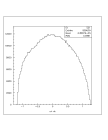
u+ up
|
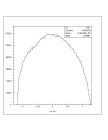
u+ dw
|
<=> |

u+ all
|
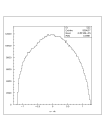
u- up
|
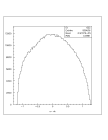
u- dw
|
<=> |
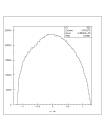
u- all.png
|
Ration
First case
A null slope is found when "non-crossed ratio" are fitted.
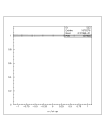
u-/u+ up
|
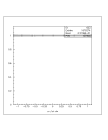
u-/u+ dw
|
<=> |
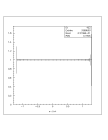
u-/u+ merged data
|
Why? The two samples entering in each of the above ratios are bound by the trasformation CRπ rotating the geometry of the event of 180 degrees around the z axes and trasforming a K+ into a K- (see the note 2). Now the 2 mrad rotation modifies the horizontally projected curvatures and the corresponding u values exactly in the same way for K- and K+ at a given orientation of the magnetic field.
Ratio
Second case
A different choice could be done in making partial distribution ratio: the "crossed ratio"
(see again the note 2)
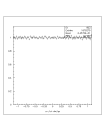
u- dw/u+ up
|
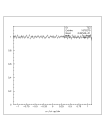
u- up/u+ dw
|
The two distributions show a general fluctuation and a chi2 for the slope fitting is a little bit worse then in the previous case, but the slope value stay always at zero!
The fluctuations on the two plots, fortunately, are tightly correlated and they cancel out on the merged data.
Why the fluctuations? The two samples envolved in the same ratio are bound by the CPx that reflects the event geometries respect to horizontal plane and transforms a K+ into a K-. Now the 2 mrad rotation modifies the horizontally projected curvatures, toward a direction which depends on the primary kaon charge.
Note
In conclusion let us note that the affect is well under controll; in fact the rotation, if not too large, it is not spoiling to much the slope evaluation! However just looking at the mass and at the mass vs φ, a credibile guess on the rotation could be derived; It seems to reach in fact a sensibility of a mrad. The main difference between this case and that of the previous shift perturbation (note 2) is that the umbiassed distribution ratios here are those between classes of avents collected with the same magnetic field, while for the shift case the umbiassed rations are derived from crossed class respect to the magnetic field.
Pisa
10.03.04
GmP,SG
================================
GmP,SG